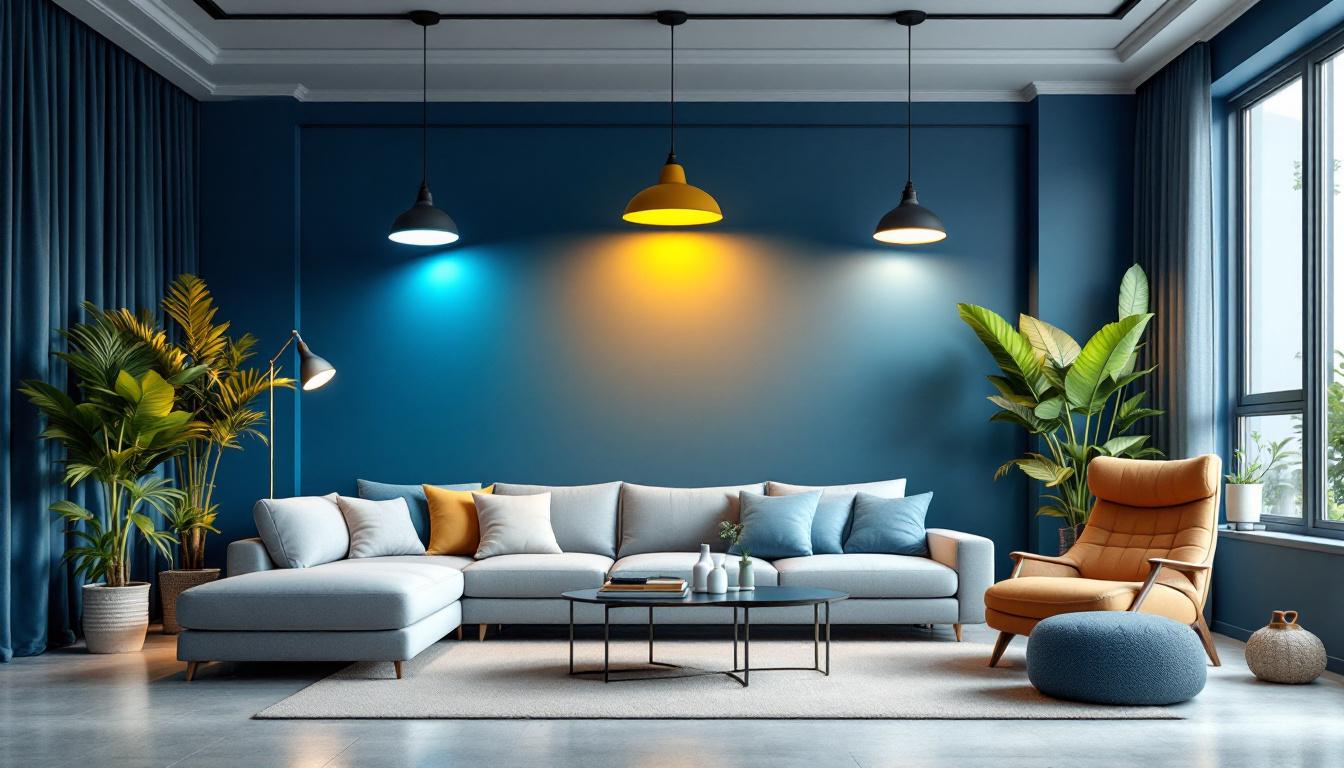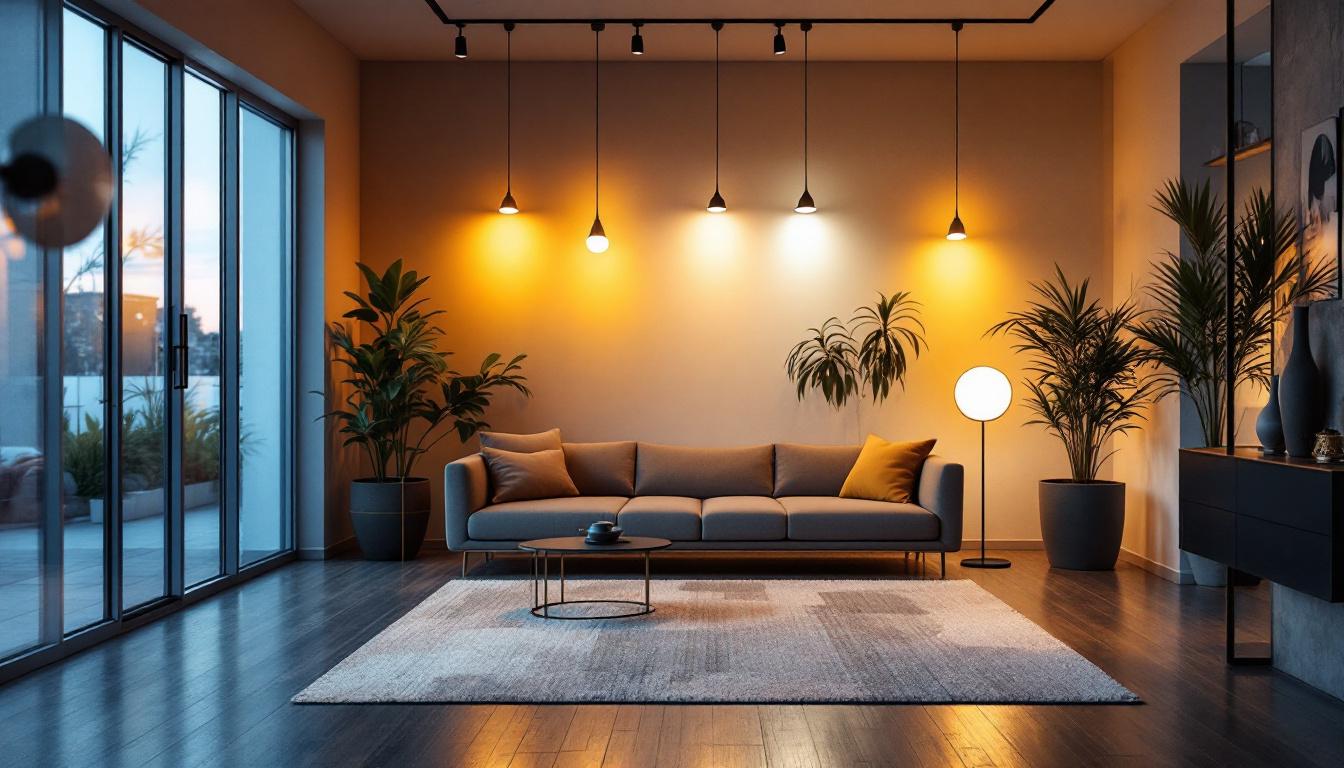
Lighting is an essential aspect of any architectural design, influencing not only the aesthetics of a space but also its functionality. As lighting contractors, the decision to use canned lighting or explore alternative options can significantly impact the quality of a project. This article delves into the pros and cons of canned lighting compared to various alternatives, providing insights that can help lighting contractors make informed choices.
Canned lighting, often referred to as recessed lighting, involves fixtures that are installed into the ceiling, creating a streamlined and unobtrusive look. These fixtures are designed to provide ambient light and can be used in various settings, from residential homes to commercial spaces. The sleek design of canned lighting allows for a seamless integration into the ceiling, making it an ideal choice for modern interiors where aesthetics play a crucial role.
One of the primary advantages of canned lighting is its ability to create a clean and modern aesthetic. When installed correctly, these fixtures can enhance the architectural features of a room without overwhelming the design. Additionally, they are versatile, suitable for various applications, including task lighting, accent lighting, and general illumination. For instance, in a kitchen, strategically placed canned lights can illuminate countertops for cooking while also providing a warm glow for dining areas.
Energy efficiency is another significant benefit. Many canned lighting options now come equipped with LED technology, which not only reduces energy consumption but also extends the lifespan of the fixtures. This can lead to lower maintenance costs over time, making it an attractive option for both contractors and clients. Furthermore, the dimmable features available in many LED canned lights allow homeowners to adjust the brightness according to their needs, enhancing the functionality of the space while conserving energy.
Despite its many benefits, there are considerations to keep in mind when opting for canned lighting. Installation can be more complex than traditional fixtures, often requiring access to the ceiling space above. This can be a challenge in existing structures where retrofitting is necessary. Additionally, the type of ceiling—whether it’s flat, sloped, or has beams—can affect the installation process and the types of fixtures that can be used.
Moreover, the placement of canned lights is critical. Poorly positioned fixtures can result in uneven lighting, creating shadows or overly bright spots. Therefore, careful planning and consideration of the room’s layout are essential for achieving optimal results. It’s also important to consider the beam angle of the lights; wider angles can provide more general illumination, while narrower angles can be used to highlight specific areas or features in a room. Consulting with a lighting designer can help ensure that the lighting plan maximizes both functionality and aesthetics, creating a harmonious environment that meets the needs of its users.
While canned lighting is a popular choice, several alternatives can provide unique benefits and aesthetics. Understanding these options allows lighting contractors to offer clients a broader range of solutions tailored to their specific needs.
Pendant lighting has gained popularity for its stylish appearance and versatility. These fixtures hang from the ceiling, providing focused light that can enhance specific areas, such as dining tables or kitchen islands. They come in various designs, from modern to vintage, allowing for customization based on the client’s preferences.
One of the advantages of pendant lighting is its ability to serve as a decorative element in a room. Unlike recessed fixtures, pendants can add character and style, making them a focal point in the design. They also offer flexibility in terms of height adjustment, allowing for tailored illumination based on the space.
Track lighting is another alternative that offers both functionality and design flexibility. This system consists of a track mounted to the ceiling, with adjustable fixtures that can be directed to highlight specific areas or objects. This versatility makes track lighting ideal for galleries, retail spaces, and even residential settings.
One of the key benefits of track lighting is its adaptability. Contractors can easily reposition the fixtures to accommodate changing needs or design trends. Additionally, track lighting can be combined with various bulb types, including LED, to enhance energy efficiency and reduce operational costs.
Wall sconces are an excellent choice for adding ambient or accent lighting to a space. These fixtures are mounted on the walls and can provide a warm glow that enhances the overall atmosphere of a room. They are particularly effective in hallways, living rooms, and bedrooms, where they can create a cozy and inviting ambiance.
One of the advantages of wall sconces is their ability to complement other lighting sources. When used in conjunction with canned or pendant lighting, they can create a layered lighting effect that adds depth and dimension to the space. Furthermore, wall sconces come in a variety of styles and finishes, making it easy to match them with the overall design scheme.
When deciding between canned lighting and its alternatives, several factors should be considered. Each option has its unique advantages and potential drawbacks, which can influence the final decision based on the specific project requirements.
Cost is often a primary concern for both contractors and clients. Canned lighting can be more expensive to install due to the need for additional labor and materials, especially in retrofitting situations. However, the long-term energy savings associated with LED options can offset initial costs over time.
In contrast, alternatives like pendant and wall sconces may have lower installation costs, particularly if they can be easily integrated into existing electrical systems. However, the overall cost will depend on the quality and design of the fixtures selected.
Design flexibility is another critical aspect to consider. Canned lighting offers a minimalist look that can seamlessly integrate into various architectural styles. However, it may lack the decorative appeal that pendant lighting or wall sconces can provide.
On the other hand, alternatives like track lighting and pendants can serve as statement pieces, adding visual interest to a space. Contractors should evaluate the project’s design goals to determine which lighting option aligns best with the desired aesthetic.
Functionality is paramount in lighting design. Canned lighting is excellent for general illumination, making it suitable for larger spaces that require even lighting distribution. However, it may not provide the focused light needed for specific tasks, such as reading or cooking.
Alternatives like wall sconces and pendant lights can offer targeted illumination, enhancing functionality in specific areas. For example, pendant lights over a kitchen island can provide task lighting, while wall sconces can create a warm atmosphere in a living room. Understanding the intended use of each space is essential for selecting the most effective lighting solution.
For lighting contractors, staying informed about the latest trends and technologies in lighting design is crucial. This knowledge can help in making recommendations that not only meet client expectations but also enhance the overall quality of the project.
Before making any lighting decisions, conducting a thorough lighting audit is essential. This process involves assessing the existing lighting conditions, understanding the client’s needs, and identifying areas that require improvement. By gathering this information, contractors can provide tailored solutions that address specific challenges and enhance the overall lighting experience.
During the audit, consider factors such as the size of the space, the purpose of each area, and the natural light available. This comprehensive approach will enable contractors to make informed recommendations, whether opting for canned lighting or exploring alternative options.
The lighting industry is continually evolving, with new technologies and designs emerging regularly. Staying updated on the latest advancements, such as smart lighting systems and energy-efficient solutions, can provide contractors with a competitive edge. These innovations not only enhance the quality of lighting but also contribute to sustainability efforts, which are increasingly important to clients.
Participating in industry events, workshops, and training sessions can help contractors stay informed and connected with other professionals in the field. This knowledge can be invaluable when making recommendations to clients and ensuring that projects meet modern standards.
Effective communication and collaboration with clients are essential for successful lighting projects. Understanding their preferences, lifestyle, and specific needs can help contractors provide tailored solutions that exceed expectations. Engaging clients in the design process can also foster a sense of ownership and satisfaction with the final results.
Encouraging clients to explore various lighting options, including canned lighting and alternatives, can lead to a more informed decision-making process. Providing visual aids, such as mood boards or 3D renderings, can help clients visualize the potential outcomes and make choices that align with their vision.
Choosing between canned lighting and its alternatives is a critical decision for lighting contractors that can significantly influence the outcome of a project. By understanding the benefits and drawbacks of each option, contractors can provide clients with informed recommendations tailored to their specific needs.
Ultimately, the best lighting solution will depend on various factors, including cost, design preferences, and functionality. By conducting thorough audits, staying updated on industry trends, and collaborating effectively with clients, lighting contractors can navigate the complexities of lighting design and deliver exceptional results.
As the industry continues to evolve, embracing innovation and exploring diverse lighting options will be key to staying competitive and meeting the demands of a discerning clientele.
Ready to elevate your lighting projects with the best in spec-grade lighting? Look no further than LumenWholesale for a vast selection of top-quality lighting solutions at unbeatable wholesale prices. Say goodbye to inflated markups and hello to superior products that meet the highest industry standards. With free shipping on bulk orders, LumenWholesale is your go-to source for premium lighting without the premium price tag. Don’t compromise on quality or value—explore our collection now and discover the perfect blend of quality, affordability, and convenience for your next project.

Discover the best wafer lights for lighting contractors, with crucial insights on efficiency, cost savings, and installation tips.

Discover how lighting contractors can elevate their projects with Gama Sonic’s innovative solutions.

Discover the essential guide for lighting contractors with our comprehensive handbook on light fixture hooks.

Discover the step-by-step guide to installing fluorescent tubes and transform your space with energy-efficient lighting.